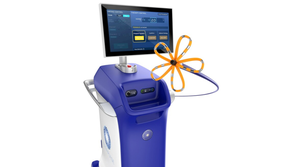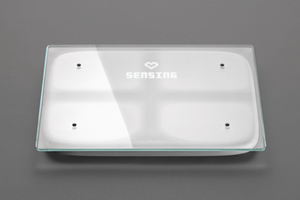Medical device firms can save millions by being properly prepared for site selection negotiations.
January 1, 2007
|
BUSINESS PLANNING & TECHNOLOGY DEVELOPMENT
There are a variety of state and local incentives available to medical device manufacturing firms depending on the geographic location, type of operation, investment, employment, and tax impact of the company's facilities. Such incentives include tax rebates, exemptions, moratoriums, reductions, credits, and deductions; infrastructure improvements; and relocation and cash grants—which can be used to offset both start-up costs as well as the cost of ongoing operations.
Total benefits provided to a company in a given region can range from a low of several thousand dollars per employee to cases in which employers have been offered incentives packages that amounted to millions of dollars per employee. Whether a company will be on the lower or higher end of this range—and whether available incentives are collected at all—will depend to a large extent on the knowledge and skill a company brings to the negotiating table.
The Incentives Management Process
|
Figure 1. (click to enlarge) Responses to a survey of executives at more than 300 large companies in the United States that asked, “Are you confident that your company is collecting all of the |
In the United States, a total of $48.8 billion is spent annually on state and local incentives to attract new investment, jobs, and tax dollars.1 Yet many executives feel that their companies are not maximizing their utilization of these benefits. A recent survey of more than 300 large companies in the United States shows that only 14% of all chief financial officers are confident that their companies are collecting all available incentives and credits (see Figure 1).2 One-third of these CFOs think that other companies in their industry are getting more incentives than their company.
In identifying the reasons that their companies fail to take advantage of all available credits and incentives, only 4% of respondents said that the failure was due to poor negotiation. More than 81% attributed the lack of efficiency in this area to the absence of a formal process for identifying and securing incentives and credits, as well as poor tracking of compliance requirements after incentive programs are negotiated. Such a perception was verified by a study at Georgia State University, which found that only about 50% of all negotiated incentives are ever collected.3
|
Figure 2. (click to enlarge) Sample process used by site selection consultants in evaluating, negotiating, implementing, and monitoring incentives programs offered to medical device manufacturers that locate in a particular region. |
An important component in optimizing the amount of incentives attained by locating in a particular region is the information and approach that device manufacturers bring to the negotiating table. The best incentives negotiations start with a full understanding of what tools are available in the geographic area in which a company is interested. Although incentives cannot and should not be used to determine the best initial areas to look at when planning an expansion or relocation, it is important to introduce incentives discussions early in the evaluation of finalist communities (see Figure 2).
Finalist communities should be informed that a company is looking at how incentives and available credits distinguish one finalist location from another. Many manufacturers do not have the background or objectivity necessary to maximize the use of available incentives and credits because they do not conduct such negotiations on a regular basis (see sidebar). Frequently companies reveal too much about their plans to state and local officials prior to making a final decision. Thus, they lose some or all of their leverage in final incentives negotiations.
In one recent example, a company's senior vice president decided to circumvent the incentives negotiation process and negotiate with state and local officials on his own. Although the company ended up with almost $5000 per employee in incentives benefits, the executive didn't know that his biggest competitor had negotiated a deal worth almost $15,000 per employee. With more than 500 employees scheduled to be hired at the new facility, the failure to go through the incentives negotiation process cost the company and its shareholders more than $5 million.
Negotiating Based on Need
There is a broad range of possible incentives programs that may or may not apply to a company's specific situation (see Table I). The key to maximizing the use of these programs is knowing how the programs work and how they could affect a company's operating and start-up costs. For example, many state programs offer job creation tax credit programs that provide a certain level of state tax credits—ranging from $500 to $31,500 per employee—based on the hiring of new personnel. Many of these programs have specific wage or benefits requirements that can preclude the use of these incentives without adequate knowledge of how they apply to a company's specific situation.
|
|
|
|
|
Table I. Types of state, local, and federal incentives and credits. |
Moreover, if a manufacturer does not currently have a tax liability in the state in which it is considering locating and it is unlikely that the company will be generating liability in the near future, these job creation tax credit programs have little or no impact on the company's financials. Too often, operations personnel get involved in negotiating incentives with little understanding of how the value of tax credits can affect various operating scenarios. By the time corporate tax accountants get involved in the analysis, there is little that can be done to salvage the incentives negotiations.
Capitalizing on Incentives
Many states and areas have identified the medical device manufacturing industry as a high-priority target for recruitment. Incentives in these regions can be quite lucrative. When Scripps Research Institute was looking for an East Coast home for its new research center, the State of Florida, led by Governor Bush, kicked in more than $450 million in incentives, including more than $300 million in grant funding and a free $140 million facility. According to Scripps, the facility will employ 545 workers by its seventh year of operation—an incentives-to-employment ratio of $826,000 per job.
Most incentive deals are not quite that lucrative, but are still worth pursuing. For example, when orthopedic device manufacturer Zimmer announced its desire to expand its facilities in Warsaw, IN, state and local governments obliged with more than $6 million in incentives—an incentives-to-employment ratio of $24,000 per employee.
MedVenture Technology Corp., a designer and manufacturer of minimally invasive surgical products and other devices, moved its facilities from Louisville, KY, across the river to Jeffersonville, IN, in order to expand its operations and avail itself of the special tax incentives offered to medical device manufacturing companies by the State of Indiana. The 85,000-sq-ft facility will create about 170 jobs this year with the help of $4 million in state and local incentives, an incentives-to-employment ratio of $23,530 per employee.
Some states provide free training services to companies as a noncash incentive that improves the quality of the local labor force. The Gambro Group worked with the Alabama Industrial Development Training Institute (AIDT) to provide training to the 150 new employees that the company expects to hire in Opelika, where 10 million Polyflux dialyzers will be produced annually in a new 100,000-sq-ft manufacturing facility. AIDT assisted with the hiring of Gambro's first 13 employees in Opelika. The new hires were sent to Hechingen, Germany, in February to begin 18 months of training.
Depending on the types of incentives programs that have been approved by legislatures, incentives vary greatly from one region to another (see Tables II–VI). Total state and local assistance generally falls in the $10,000 to $40,000 per job range. For capital-intensive facilities, incentives can range from 10 to 30% of capital investment costs. However, the actual final incentives can vary markedly, depending on the types and proposed payroll of the jobs being created, the capital investment, the tax-generating potential of the project, and the level of competition for the new facility.
|
|
|
|
|
|
|
|
|
Table II. Training incentives offered to medical device manufacturers by region. Certain restrictions apply. Source: Location Management Services. |
|
|
|
|
|
|
|
|
|
Table III. Financing incentives offered to medical device manufacturers by region. Certain restrictions apply. Source: Location Management Services. |
|
|
|
|
|
|
|
|
|
Table IV. Tax credits offered to medical device manufacturers by region. Certain restrictions apply. Source: Location Management Services. |
|
|
|
|
|
|
|
|
|
Table V. Tax abatements and moratoriums offered to medical device manufacturers by region. Certain restrictions apply. Source: Location Management Services. |
|
|
|
|
|
|
|
|
|
Table VI. Grants offered to medical device manufacturers by region. Certain restrictions apply. Source: Location Management Services. |
Selecting the Right Location
Too often, executives do not evaluate all of their options prior to committing their companies to a long-term location. They fail to thoroughly explore labor market, real estate, utilities, and incentives programs that can make the difference between enterprise success and failure. On the other hand, some executives allow one factor, such as incentives, to drive the entire location decision. Neither of these approaches is correct.
The best site selection approach for medical device manufacturers is to first identify the key criteria necessary for the success of the proposed facility, as well as the project's location drivers. Some examples of location drivers include the following.
Proximity to commercial air service.
Availability of sophisticated metalworking skills.
Available workforce sufficient for expansion.
Area university and postgraduate training facilities.
Quality of life for leadership employees.
Once these key drivers are identified, a company is better positioned to conduct a thorough analysis of potential site locations. Oftentimes a search can encompass multiple states or countries. Each state, area, and country has thousands of elements of information that could be important in the site selection process, and the sheer volume of such information can be overwhelming to the site-seeking executive. By identifying key requirements up front, it is possible to focus due-diligence efforts on those factors that are most important to the success of the proposed project.
Conclusion
There are countless tax and financial benefits available to medtech manufacturers that know how to access them and can put a process in place to collect them. The best way to start the process of maximizing incentives and credits is to conduct a confidential analysis of a prospective location long before a final decision is made as to where a facility will be located.
Knowledge and information are the keys to successful incentives negotiation. Savvy companies enter into negotiations with an understanding of exactly what programs are available, how they have been used in the past for similar projects, and how best to use them for the project at hand. Monitoring, maintenance, and compliance are necessary to ensure that all of the benefits on which the location decision was made are fully realized.
Although incentives are often the tiebreaker between finalist locations, executives should not make a location decision based on incentives alone. Many other factors should be considered prior to commencing incentives negotiations. Once base requirements are satisfied, productive and meaningful negotiations can begin.
References
1. A Peters and P Fischer, “A Note on State and Local Incentive Expenditures,” unpublished manuscript (Iowa City: University of Iowa, 2002).
2. James Renzas, “Who's Cashing In?” Area Development Magazine 40, no. 1 (2005): 59–64.
3. K Thomas, Competing for Capital: Europe and North America in the Global Era (Washington, DC: Georgetown University Press, 2000).
James H. Renzas is president and CEO of Location Management Services (Mission Viejo, CA), a site selection and incentives negotiation consulting company with 37 offices nationwide.
Copyright ©2007 MX
About the Author(s)
You May Also Like





